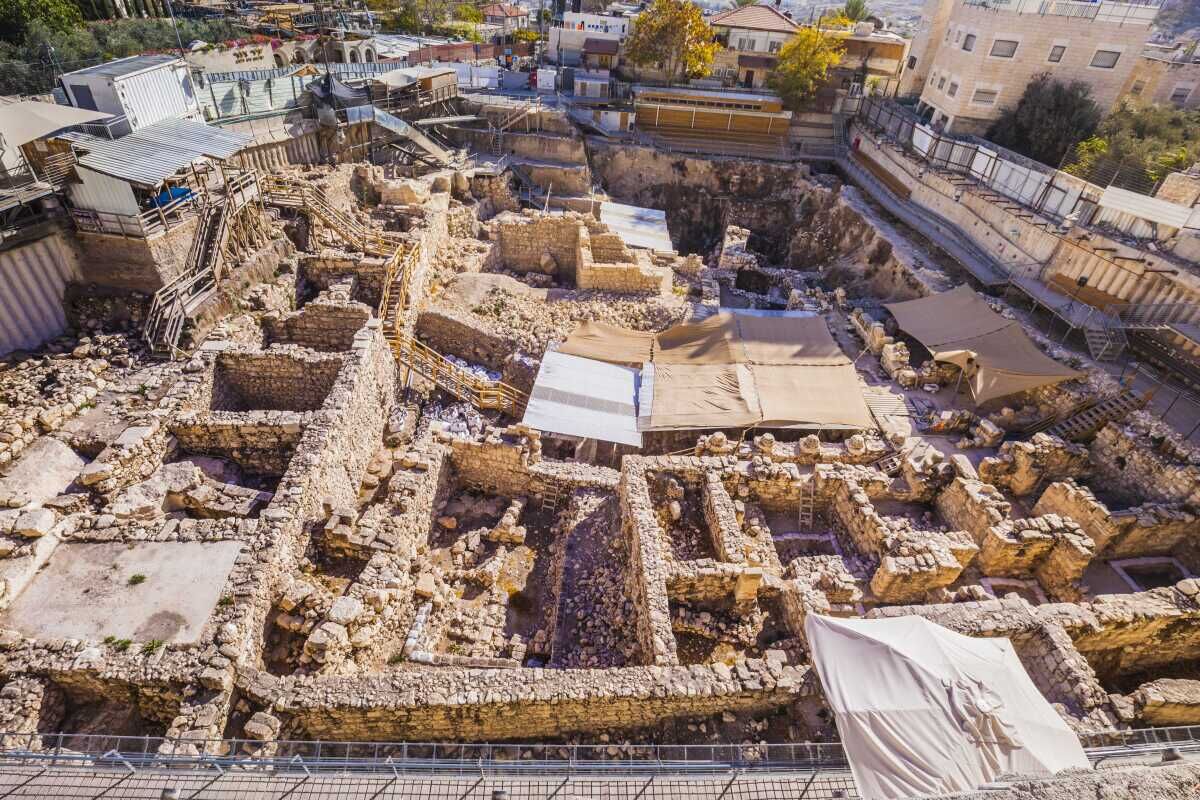Antiochus’s Roof: Earliest Roof Tiles Discovered in the City of David

Excavations conducted by the Israel Antiquities Authority (iaa) and Tel Aviv University at the City of David, led by Prof. Yuval Gadot and Dr. Yiftah Shalev, have recently uncovered the oldest ceramic roof tiles found in the land of Israel.
Sixteen Hellenistic Period roof tile fragments, dating to the second century b.c.e., were found in the ongoing Givati Parking Lot excavations. Their dating correlates to the time of the Greek Seleucid king, Antiochus iv Epiphanes—the famous oppressor of Judea and Jerusalem, who was eventually overthrown by the Maccabees (or Hasmonean dynasty)—as prophesied in the book of Daniel, recounted in the books of Maccabees, and retold in the famous story of Hanukkah.
Ceramic tiles, first invented in Greece around the seventh century b.c.e., were popular in the Greek world due to their durability and resistance to water. Due to Jerusalem’s climate, however, there wasn’t much need for rain-resistant roofing tiles throughout the year. Therefore, the researchers believe that the use of such materials for the first time in this context indicates an intentional act of Antiochus Epiphanes in introducing Hellenistic influence into the region at this time.
Following the Hasmonean overthrow of Seleucid rule, the use of such tiles appears to fall out of use entirely until the time of the Roman conquerors.

According to Dr. Filip Vukosavović: “The climate and the relatively low precipitation in Israel, as well as other factors, do not justify the use of tiles for roofing, yet Antiochus still chose to make use of these roof tiles, probably for cultural reasons and to make a statement, by introducing Greek monumental material culture in the country at a short distance from the Jewish temple.”
This discovery of Hellenistic roof tiles links to a previously postulated find in the same area: the remains of the famous Acra (fortress) of Antiochus Epiphanes, built to guard and dominate the Jerusalem population and temple. Dr. Vukosavović speculates that these tiles could be directly connected to this fortress.
According to Dr. Ayala Zilberstein of the Israel Antiquities Authority and Tel-Aviv University, “The architectural remains uncovered over recent years have reopened the debate, and they actually strengthen the identification of the fortress on the City of David Hill.” (You can read more about this in our article, “Fortress of Antiochus Epiphanes Uncovered in Jerusalem.”)

In a December 6 joint press release, the researchers wrote, “Tiles were very rare in our region during this period, and they were alien to local construction traditions, indicating that the technique of using tiles to roof parts of a tower or a structure inside that famous fortress was brought from Greek-controlled areas by foreign rulers ….”

These finds will be exhibited to the public for the first time on Monday, December 11, on the fifth day of Hanukkah, at the Israel Antiquities Authority’s Conference, “In Those Days at This Time—the Hasmoneans Are Coming.”
Dr. Vukosavović said: “Until now, we had little material evidence for the presence of the Seleucid Greeks in Jerusalem. The new tiles discovered in the City of David provide tangible remains of the Seleucid Greek presence in the region, linking us with the story of Hanukkah. It’s very exciting to encounter the Seleucid ruler Antiochus iv ‘face-to-face’, almost 2,200 years after the events of Hanukkah.”
https://www.youtube.com/watch?v=Dkdpn0E439w